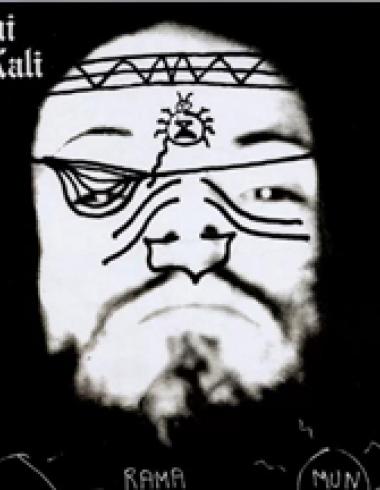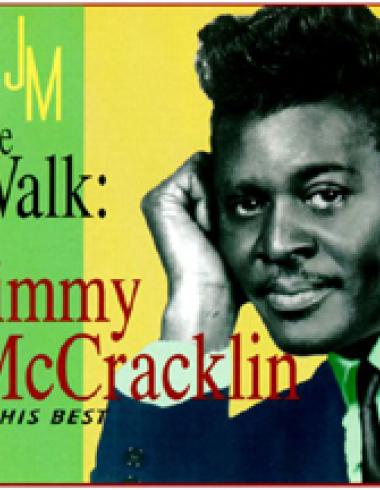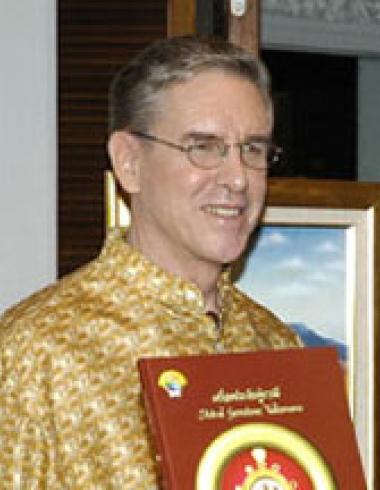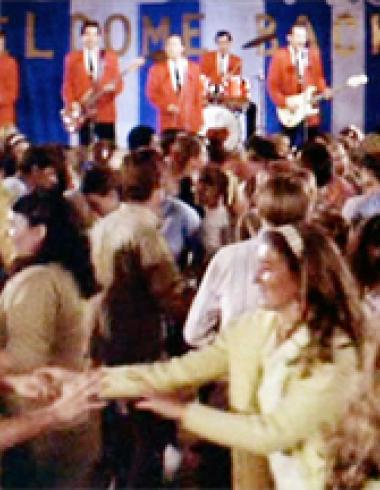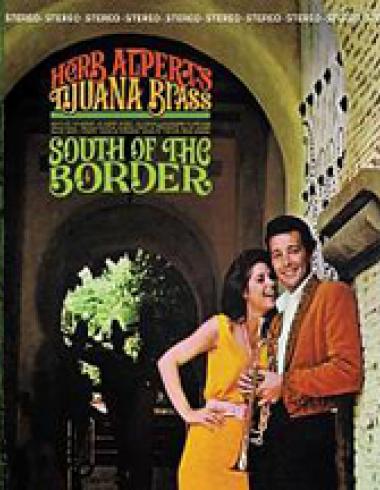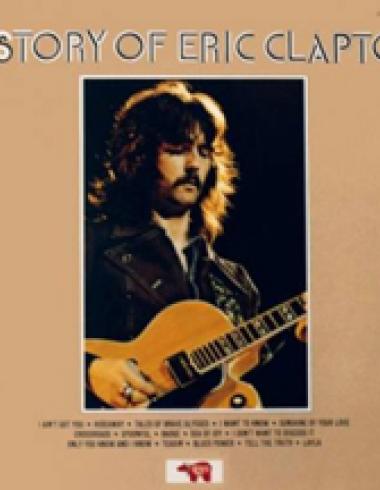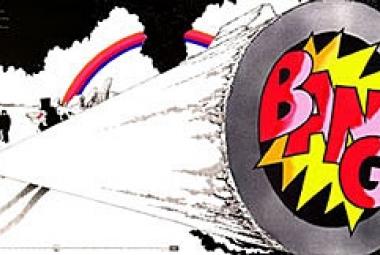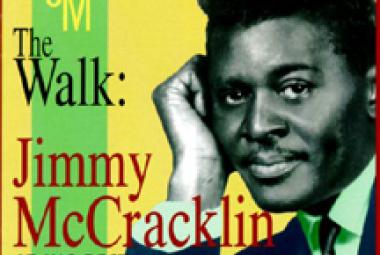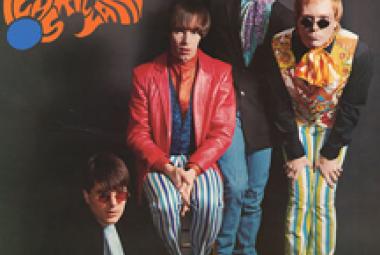The Rolling Stones were in the vanguard of the British Invasion of bands that became popular in the US in 1964–65. They were instrumental in making blues a major part of rock and roll, and of changing the international focus of blues culture to the less sophisticated blues typified by Chess Records artists such as Muddy Waters, writer of “Rollin’ Stone”, the song after which the band is named. Their albums Beggars’ Banquet (1968), Let It Bleed (1969), Sticky Fingers (1971), and Exile on Main St. (1972) are generally considered the Rolling Stones’ “Golden Age”. Musicologist Robert Palmer attributed the “remarkable endurance” of the Rolling Stones to being “rooted in traditional verities, in rhythm-and-blues and soul music” while “more ephemeral pop fashions have come and gone”. The Rolling Stones were inducted into the Rock and Roll Hall of Fame in 1989, and the UK Music Hall of Fame in 2004. Their estimated album sales are above 250 million. In 2012, the band celebrated its 50th anniversary. (More from Wikipedia)
See Also:
You can talk about your pioneers of rock and roll – Chuck Berry, Little Richard, Elvis Presley, James Brown, just to name a few – and you can even bring up your British Invasion greats – the Beatles, the Rolling Stones, the Animals, the Yardbirds, the Kinks, just to name another few. All of them are already in the Rock & Roll Hall of Fame, and deservedly so. However, you can play a lot of more modern rock records all day long and not really discern more than a hint of their direct influence; no question it’s in the DNA, but actual Elvis Presley-style vocals or Chuck Berry guitar licks or James Brown wails are elusive.
That is not so with Link Wray: His influence is front and center on a good 50% of the records that I play, because he is credited with introducing the “power chord” on electric guitar to rock and roll, a technique whose effect is often enhanced by distortion.
After Ernest Rock replaced Ricky Johnson on lead guitar, Les Sinners was signed to Jupiter Records, the Canadian subsidiary of London Records (which was the American label for the early Rolling Stones records).
(April 2013)
* * *
I was born a couple of years later than Greg Shaw, so I turned 14 in 1965. By then, the Beatles and the Rolling Stones were old news; and while I was still paying attention, what was really grabbing me at the time were American artists and bands. First and foremost was “Like a Rolling Stone” by Bob Dylan; that song – plus the flip side “Gates of Eden” that was nearly as long and every bit as good – captivated me in a way that I just couldn’t keep quiet about. Other great folk-rock sounds of that period included the release of the cover of Dylan’s “Mr. Tambourine Man” by the Byrds and the revamped “The Sounds of Silence” by Simon and Garfunkel. Bob Dylan himself preferred the Byrds’ cover to his own recording of “Mr. Tambourine Man”; but in my usual contrarian way, I preferred Dylan’s original – it was a lot longer for one thing.
These songs were followed closely by the glorious sounds of garage rock and psychedelic rock that were then in their infancy. Songs like “Pushin’ Too Hard” by the Seeds, “We Ain’t Got Nothin’ Yet” by Blues Magoos, and “I Had Too Much to Dream (Last Night)” by the Electric Prunes really made an impression on me. It wasn’t until I picked up the Nuggets collection and then the numerous Pebbles albums that I plumbed the depths of this scene, but it was by no means brand new to me either.
But there is no shortage of interpretations of “American Pie” from all quarters (I took a stab at it myself ages ago): Bob Dylan is said to be the “jester”; the Beatles are evidently referenced in the line “sergeants played a marching tune”; and the Rolling Stones (Mick Jagger in particular) seem to have a more central role in the tale – the fifth verse includes the lyric “Jack be nimble, Jack be quick / Jack Flash sat on a candlestick” (an obvious reference to the Rolling Stones hit “Jumpin’ Jack Flash”), several mentions of Satan (“Sympathy for the Devil” is one of several times that the Stones toyed with Satanic imagery), and apparent veiled references to the horrific Altamont Speedway Free Concert that occurred on the heels of Woodstock on December 6, 1969, where the Rolling Stones were the featured act, and the Hells Angels motorcycle club provided security.
* * *
Guitarist and songwriter Keith Richards of the Rolling Stones wrote of the Elvis Presley classic in his 2010 memoir, Life: “Good records just get better with age. But the one that really turned me on, like an explosion one night, listening to Radio Luxembourg on my little radio when I was supposed to be in bed and asleep, was ‘Heartbreak Hotel’. That was the stunner. I’d never heard it before, or anything like it. I’d never heard of Elvis before. It was almost as if I’d been waiting for it to happen. When I woke up the next day I was a different guy.”
Keith Richards once said of Buddy Holly that he had “an influence on everybody”. Richards heard Buddy perform “Not Fade Away” in concert; as only their third single, the Rolling Stones hit #3 on the UK charts with “Not Fade Away” (performed in the Bo Diddley style that was the genesis of the song in the first place) – and that song is my very favorite Rolling Stones cover song.
The Rolling Stones were from London, as were the Kinks, the Who and the Yardbirds. The Animals came from Newcastle, an industrial backwater like Liverpool, though on the opposite coast. The Hollies were formed in Manchester, though the bandmembers came from East Lancashire. The Moody Blues were from the Birmingham area; Birmingham, Alabama (one of the first major industrialized cities in the American South) is named for the British city.
* * *
In the early years, the Klubs were a hard-driving rhythm and blues band that performed a lot of covers of Rolling Stones and Pretty Things songs. They made several trips to London for gigs, including appearances at Tiles and the well-known Marquee. In one show in July 1966 at Tiles, they were actually the headlining band, with supportive acts the Fleur de Lys and the Eyes (not the same band as the UARB, the Eyes).
(July 2013)
* * *
Much of the overheated rhetoric about J. Reuben Silverbird is about his name changes; even the minor switch from Ruben to Reuben is mentioned. Using stage names is hardly limited to rock musicians – the very term itself shows that its origin is in the theatre. You needn’t go any further than the drummer for the Beatles to find one: Ringo Starr (born Richard Starkey). Guitarist and songwriter Keith Richards of the Rolling Stones used the name Keith Richard for many years. The John Birch Society called Stones frontman Mick Jagger “Mick Jaeggert” back in the 1970’s; a Google search brought up only two websites using this name – one French and one Hungarian – so this is probably not for real.
(August 2013)
Goldie and the Gingerbreads was hired to provide the music for a party in 1964 in honor of Andy Warhol’s protegée Baby Jane Holzer; other guests included the Rolling Stones. Ahmet Ertegun of Atlantic Records was also present and promptly signed the band.
The Goldie and the Gingerbreads 1964 recording of “Can’t You Hear My Heartbeat” made it to #25 in the UK. Here in this country, Herman’s Hermits released “Can’t You Hear My Heartbeat” two weeks earlier; the heavy promotion of that song cut them out of the U. S. charts. After meeting Eric Burdon and the Animals, Goldie and the Gingerbreads was signed for a European tour, where they performed with the Who’s Who of the British Invasion: the Beatles, the Rolling Stones, the Animals, the Yardbirds, the Hollies, the Kinks, and others.
(October 2013)
* * *
With the backing of Nigel Samuel (the 21-year-old son of a millionaire), the debut album by the Deviants, Ptooff! was one of the first truly independent album releases and one of the earliest albums to come straight from the Counter-Culture – it was first sold through the British underground press and later became one of the earliest records on the venerable label Sire Records (home of Madonna, among many others) back when their releases were distributed by London Records (original home of the Rolling Stones, among many others). The album has been reissued at least four times, most recently in 2013.
In 1969, Mick Farren “liberated” the earliest large-scale rock concert in the U.K., the 1969 Isle of Wight Festival by encouraging the fences to be torn down. This concert – which took place the month after Woodstock (and with many of the same acts) – featured the Who, the Band, Free, Joe Cocker, and the Moody Blues. But the real excitement was caused by the inclusion on the bill of Bob Dylan, who had been little seen since his near-fatal motorcycle accident in July 1966. When Dylan took the stage, audience members included three of the Beatles, three of the Beatle wives, three of the Rolling Stones, Eric Clapton, Liz Taylor, Richard Burton, Jane Fonda, Roger Vadim, Syd Barrett, and Elton John.
One of the main reasons for the location of the original Woodstock was to lure Bob Dylan out of hiding – the idea was to throw a huge party practically on his doorstep that surely he couldn’t resist attending. Woodstock is the name of the town where Dylan lived (and also members of the Band); the festival itself was in Bethel. But resist he did; Bob Dylan instead signed up to appear at the Isle of Wight Festival and set sail for England on August 15, 1969, the day that Woodstock opened.
Along with many other figures from the underground press, Mick Farren moved to the influential New Musical Express (NME) in 1974. Quoting again from the Telegraph obituary: “Allowed free rein to explore the outer reaches of popular culture by its editor, Nick Logan, Farren turned in a series of memorable pieces on people such as the motorbike stunt-rider Evel Knievel and the avant-garde film director Kenneth Anger.
“In the summer of 1976, by which time the Sex Pistols were introducing Britain to punk, Farren’s NME piece headlined ‘The Titanic Sails At Dawn’ [again using a Bob Dylan lyric, this time from one of my all-time favorites, “Desolation Row”] was judged to have caught the mood among the generation of teenagers disaffected by giant stadium acts like the Rolling Stones and Led Zeppelin.”
(March 2014/1)
* * *
The life of a rock band is analogous to people’s experiences with going to college. Sometimes you don’t get out of the first semester, other times the thing dies away after a couple of years. The average life of a successful rock band is probably the four or five years that it takes to get a degree. And occasionally, one is able to, ahem, stay in academia for a lifetime – witness the Rolling Stones, Golden Earring, and KISS.
* * *
Small Faces had a rocky start with Decca Records but eventually began working under one of England’s top producers, Andrew Loog Oldham – who had worked with the Rolling Stones, Marianne Faithfull, and others – and signed them as the top act on his new company, Immediate Records. Their first album with that label, Small Faces – a self-titled album like their debut effort with Decca, Small Faces – was an instant hit in mid-1967 and included a song that even made the charts in the U.S., “Itchycoo Park”.
By the time the Faces album Ooh La La came out in 1973, Rod Stewart’s superstar status was wearing on the other bandmembers; Ronnie Lane left the band right after that. Ron Wood was lured to the Rolling Stones, drummer Kenney Jones eventually joined the Who, and Ian McLagan became a sought-after session keyboard player.
(April 2014)
The core of the Yardbirds though is Paul Samwell-Smith (bass guitar and producer), Keith Relf (vocalist and harmonica), Chris Dreja (bass and rhythm guitar), and Jim McCarty (drums); together with original lead guitarist Anthony “Top” Topham, the band originally assembled in May 1963 under the name the Blue Sounds before settling on the Yardbirds, a slang term for hobos waiting around for a freight train, and also a nickname for legendary jazz musician Charlie Parker. In September 1963, the Yardbirds took over as the house band for the Crawdaddy Club in Richmond, succeeding the Rolling Stones.
The frequent hit songs by the Yardbirds – “I’m a Man”, “Happenings Ten Years Time Ago”, “For Your Love”, “Heart Full of Soul”, “Shapes of Things”, “Over Under Sideways Down”, etc. – hit my eardrums with at least as powerful an impact as the greatest Rolling Stones songs, like “Brown Sugar”, “Jumpin’ Jack Flash”, “Paint it Black”, “Get off of My Cloud”, “Sympathy for the Devil”, “Street Fighting Man”, etc. To me though, these songs sound every bit as fresh to me today, probably because they haven’t been played to death on oldies’ radio as much as anything else.
* * *
John Mayall’s band was a revolving door of famous British musicians; but even more remarkably, bandmembers who left John Mayall & the Bluesbreakers often helped form other rock bands. Examples include Mick Taylor, the first new musician to join the Rolling Stones since their classic line-up was formed; Jon Mark and Johnny Almond, who later formed Mark-Almond, among other musical accomplishments (not to be confused with Marc Almond of Soft Cell); top English drummer Aynsley Dunbar; and Andy Fraser, a founding member of Free.
* * *
Jack Bruce was the original bass guitarist for Blues Incorporated, which was founded by Cyril Davies and Alexis Korner as the first amplified R&B band in Britain; other bandmembers in the early line-up include Charlie Watts, the drummer for the Rolling Stones, and vocalist Long John Baldry. The band was never intended to have a fixed line-up and included numerous fine musicians over its life, among them the future drummer for Cream, Ginger Baker. Jack Bruce was also briefly a member of Manfred Mann.
(May 2014)
* * *
Manfred Mann was one of the original British Invasion bands, but they deserve more State-side success than they had, so allow me to quote Bruce Eder’s article in Allmusic to give an overview of the band’s history: “An R&B band that only played pop to get on the charts, Manfred Mann ranked among the most adept British Invasion acts in both styles. The fact that their range encompassed jazz as well as rhythm & blues, coupled with some elements of their appearance and presentation – co-founder/keyboardist Manfred Mann’s bearded, bespectacled presence – also made the Manfreds more of a thinking person’s band than a cute, cuddly outfit like the Beatles, or sexual provocateurs in the manner of the Rolling Stones. Yet, their approach to R&B was as valid as that of the Stones, equally compelling and often more sophisticated. They charted an impressive number of singles from 1964 through 1969, and developed a large, loyal international fandom that lingers to this day.”
Manfred Mann always had a chameleon quality and, unlike the top-flight British Invasion bands like the Beatles, the Who and the Rolling Stones, had frequent changes in their line-up. As I noted last month, Jack Bruce, later of Cream was a member in the mid-1960’s.
* * *
The name of the fairly prominent neo-psychedelic outfit called the Brian Jonestown Massacre is a portmanteau of Brian Jones, a founding member of the Rolling Stones with Jonestown Massacre, the notorious mass suicide of the flock of Rev. Jim Jones in their compound in Guyana after assassinating Congressman Leo Ryan – the phrase “drinking the Kool-Aid” arose from what happened there.
* * *
The Richmond Sluts were founded by Chris B (Chris Beltran, on bass guitar) and Shea Roberts (guitar and vocals) in 1998; they shared similar tastes in music, such as the Clash, the Rolling Stones, New York Dolls, and the Stooges. After adding Justin Lynn (keyboards), the Richmond Sluts developed a distinctive sound and began performing with the Brian Jonestown Massacre and Black Rebel Motorcycle Club.
* * *
Big Midnight also has released only one album, Everything for the First Time, which came out on Alive Records in 2003. Allmusic immediately notes in their review by Brian O’Neill, “Actually, there is nothing here that you will be hearing for the first time” and continues: “Everything for the First Time could have as easily came out in 1973 as it did in 2003. Call ’em ‘the Rolling Stooges’ and the band will have to plead guilty, as Big Midnight combines the nihilism of Iggy Pop (‘Love for Sin’ could have been a [David] Bowie or [Lou] Reed side written specifically with Ig in mind) with the bloozey, boozy swagger of Keith Richards’ crew.”
Great tracks on the Big Midnight album include the band’s single, “Doin’ All Right”, described by Creem magazine this way: “These denim-clad, sunglass-sporting, Rolling Stones-patched hombres from the Bay Area have crafted a great smoking-in-the-high-school-parking-lot vibe on this debut single.”
* * *
The Richmond Sluts have reunited; besides the core members Shea Roberts, Chris Beltran and Justin Lynn, the band has added Jesse Nichols (guitar) and John Tyree (drums). While they have not recorded a new album yet, the band has a cool logo – fashioned from a thick tongue like their heroes the Rolling Stones – and a T-shirt that features the tag line, Born to Boogie. The Richmond Sluts have embarked on their first European tour this year.
(June 2014)
* * *
For the Bob Dylan album Shot of Love, other players include ex-Beatle Ringo Starr on drums, current Rolling Stone Ronnie Wood on guitar, bass guitarist Donald “Duck” Dunn – formerly of Booker T and the MG’s and also the Blues Brothers Band – and veteran sessionman Danny “Kootch” Kortchmar on guitar and electric guitar. Bumps Blackwell, who produced most of Little Richard’s most indelible songs, produced the title song “Shot of Love”.
Infidels marked a change in musical direction for Bob Dylan with the addition of Jamaican rhythm section Sly & Robbie; Mark Knopfler returned for that album, and the personnel also included Mick Taylor, who was with the Rolling Stones from 1969 to 1974.
* * *
To put these ratings in context, Self Portrait (1970) is the only Bob Dylan album to get just ** before Saved, other than some live albums (Allmusic shows low ratings for most of the Rolling Stones live albums also). To this day, no one seems to understand Self Portrait – I certainly don’t. The music seems as off-putting as the splashes of color in the cover art. The first few times I played it, I really only enjoyed the live version of “Like a Rolling Stone”; I have heard several others since that I enjoy more. Some years later, the opening track “All the Tired Horses” stood out, but probably only because I couldn’t discern a hint of Bob Dylan anywhere in the song.
(August 2014)
* * *
The Rolling Stones were the “bad boys” of the British Invasion. They played around with Satanic themes and imagery, most famously with their hit “Sympathy for the Devil”, and also their under-rated psychedelic album that had the unfortunate title of Their Satanic Majesties’ Request. (From Wikipedia: “The album’s title is a play on the ‘Her Britannic Majesty requests and requires . . .’ text that appears inside a British passport.”)
But even the Stones came up with a religious themed song a while back, or at least Mick Jagger did: “God Gave Me Everything” was co-written by Mick and Christian rocker Lenny Kravitz (who also performed on the recording) and was included on his 2001 album, Very Best of Mick Jagger. I remember seeing the video many years ago back when you’d see those on MTV from time to time.
(November 2014)
* * *
Kim Fowley always wanted to be where the action was, so he relocated for a period of time to London by late 1963. One of the first fruits of his sojourn there might have been a rollicking cover version by Bo and Peep of the Sonny James/Tab Hunter romantic ballad “Young Love” that was released on Decca Records in 1964 not long after Fowley arrived in the UK. The long-time Rolling Stones producer Andrew Loog Oldham was on hand, and it is clear from the record that the studio was jammed with people. Rumored to be among those participating in the recording are Mick Jagger (and perhaps other Stones), Gene Pitney and Kim Fowley. The song is included on the Pebbles, Volume 6 LP and the English Freakbeat, Volume 6 CD.
(January 2015/1)
* * *
Regarding the title of the EP 5 x 4 by the Crawdaddys, I was thinking of the 1964 Rolling Stones album 12 x 5 myself, but the Stones had previously released a British-only EP called 5 x 5 in August 1964. One of the cuts on the Stones EP is a group-penned instrumental called “2120 South Michigan Avenue” – the street address of Chess Records in Chicago – and the Chicano garage rock band Thee Midniters used it as the basis for their popular track “Whittier Boulevard”.
* * *
On May 29, 2011, at a Rhino Records pop-up store in San Diego, the Crawdaddys showed up unexpectedly with a reunion concert that included former members Ron Silva, Peter Miesner, and Keith Fisher. After noting the surprise at the Crawdaddys being there at all, the L.A. Weekly report on the concert continued: “Another surprise was how hot and vital the band sounded, even after being dormant for so many years. You could certainly hear where latter-day ’60s revivalists like the Hives got their ideas, as singer-guitarist Ron Silva snarled his way through a set of Crawdaddys originals and vintage covers of primal rock classics like ‘Oh Baby Doll’, ‘Slow Down’ and ‘Let the Good Times Roll’. The group were at their best on Rolling Stones-style blues rockers like ‘Bald Headed Woman’, but they also deftly pulled off poppier tunes like the Knickerbockers’ Beatles sound-alike ‘Lies’ and a yearning, affecting version of the Velvet Underground’s bittersweet ‘There She Goes [Again]’.”
* * *
Members of the Crawdaddys went on to populate many other California bands; I have already mentioned several of them. The future UARB (probably by year’s end) and another like-minded San Diego band called the Tell-Tale Hearts (named after a famous Edgar Allan Poe story, “The Tell-Tale Heart”) has numerous connections with the band. Former Crawdaddys bass guitarist Mike Stax was a founding member, as were Mystery Machine alumni Bill Calhoun and Ray Brandes (I praised and heavily borrowed from Brandes’s fine biography of the Crawdaddys in preparing this post). Another past Crawdaddy, Peter Miesner contributed guitar on two tracks on the Tell-Tale Hearts CD that I have, High Tide (Big Noses & Pizza Faces), with the name adapted from that of the first Rolling Stones retrospective album, Big Hits (High Tide and Green Grass) (1966).
(January 2015/2)
* * *
Writing for Allmusic, Mark Deming raves: “Most of the tunes on Brian Olive are rooted in rhythm & blues in one way or another, but the man sure isn’t shy about showing how many ways he can bend the sound to his will; ‘Stealin’’ is a funky New Orleans second-line shuffle, ‘Jubilee Line’ has a bassline James Jamerson would have been happy to call his own fortified with free jazz sax wailing, ‘High Low’ reveals echoes of 1950’s cool jazz for bachelor pads, and ‘Killing Stone’ is a piano-based rocker that recalls the early-’70s Rolling Stones. [Brian] Olive also dips his toes into breezy faux-tropicalia on the light and sensuous ‘Echoing Light’ and some tripped-out acoustic psychedelia on ‘There Is Love’. Olive clearly scores high on the eclecticism checklist, but he’s also a fine songwriter, generating memorable tunes regardless of his stylistic bag. . . . Overall, Brian Olive is an impressive and pleasing solo debut that shows his chops as a producer, arranger, and songwriter make him more than just some Midwest sideman, and he should get back into the studio posthaste if there’s more where this came from.”
(February 2015)
* * *
I putzed around in my stacks looking for a band who was clearly influenced by the Rolling Stones – the way that my “two-fer” from a few months ago was, the Richmond Sluts and Big Midnight – but I couldn’t find one right away. So I decided to go back to the mother lode of English beat bands, the English Freakbeat series that Greg Shaw put together, where I have found several other previous UARB’s. Sadly, these albums (both vinyl and CD) have been out of print for many years, but there are used copies available here and there.
Anyway, I found one right away: THE PRIMITIVES. That’s the Primitives with the crazy hair in the middle of the cover of the English Freakbeat, Volume 4 CD; the caption inside the booklet says: “The Primitives get their hair done!”).
* * *
Mal and the Primitives released just one single in Great Britain; “Every Minute of Every Day” b/w “Pretty Little Face” (the latter song written by bandmember John E. Soul) came out on Pye Records and also made no impact on the charts, like the earlier Primitives singles. About their final U.K. single, Bruce Eder has this praise: “They had a sound similar to the original group, although [Mal] Ryder was more of a dramatic singer, with an intense but less raspy delivery, more along the lines of a pop-soul vocalist like Chris Farlowe in his later 1960’s incarnation. ‘Every Minute [of Every Day]’ was a suitable A-side, similar to the group’s past work, while ‘Pretty Little Face’ was a lot more elegant than anything the original group had ever done, right down to the rather lyrical acoustic lead guitar doubling the opening piano part, similar to what the guitars on Bill Wyman’s ‘In Another Land’ [by the Rolling Stones] do on the middle and final verse of that song.”
(May 2015)
* * *
Like “I Wanna be Your Man”, which was first recorded by the Rolling Stones, “Hello Little Girl” was one of the songs that they gave to others to record. A little known Liverpool band (at least in this country) called the Fourmost first recorded “Hello Little Girl” in 1963 and made it to #9 on the British charts; Gerry and the Pacemakers also recorded the song in this time period.
* * *
The following year, as I wrote a couple of months back, Keith Richards ran his classic opening riffs for the Rolling Stones’ monster hit “(I Can’t Get No) Satisfaction” through a fuzzbox, thus adding this to the rock repertoire.
(July 2015)
* * *




